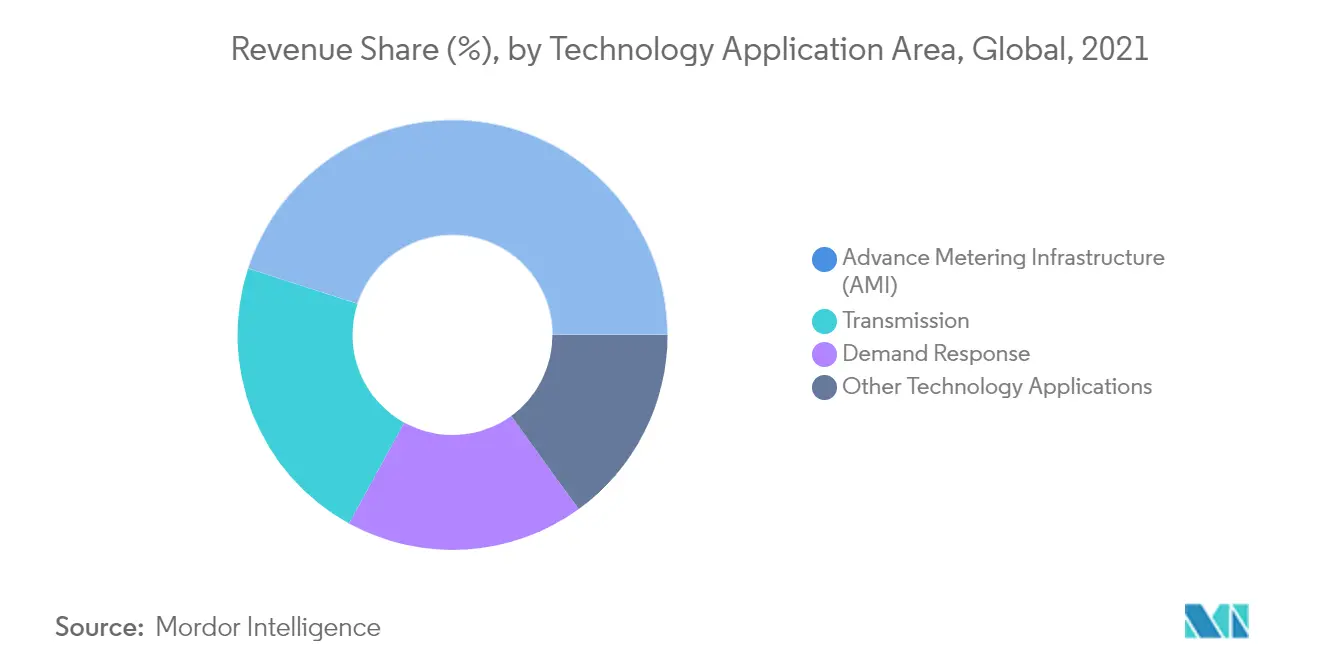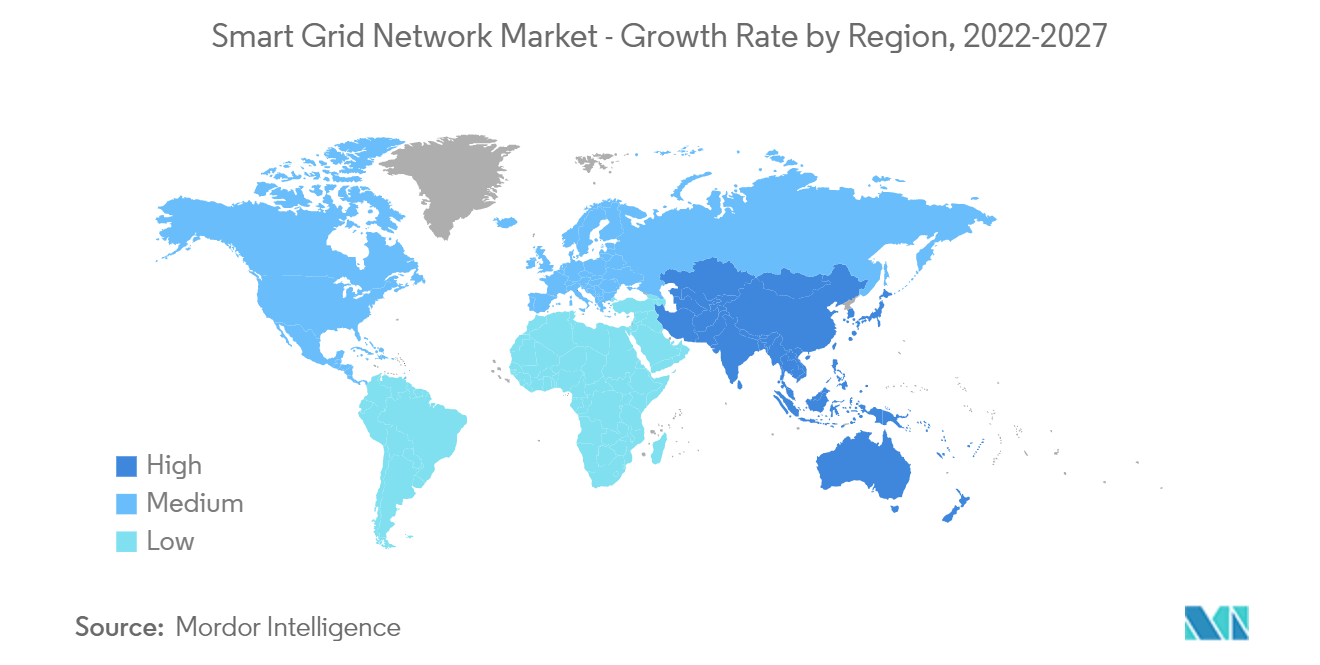Market Trends of Smart Grid Network Industry
Advanced Metering Infrastructure (AMI) to Witness Significant Growth
- Advanced metering infrastructure (AMI) or smart metering is an integrated system of smart meters, communications networks, and data management systems. It enables two-way communication between utilities and customers.
- The metering industry has taken rapid strides in the recent past few years by traversing from automated meter reading (AMR) to smart metering, using bi-directional communication, thereby enabling greater benefits to electricity distribution companies (DISCOMs), customers, and society.
- AMI provides significant operational benefits, which leads to cost savings for utility companies and convenience for customers. AMI can significantly reduce operating costs of utility companies by remotely reading meters, connecting/disconnecting service, identifying outages, generating more accurate bills in a faster manner, and enabling utilities to provide customers digital access to their usage information.
- With the increasing efforts to modernize the electricity grid and reduce T&D losses, governments across the world are investing in advanced metering infrastructure. This, in turn, is expected to drive the AMI market during the forecast period.

Asia-Pacific to Dominate the Market
- Asia-Pacific is expected to dominate the smart grid network market in 2021. It is expected to continue its dominance in the coming years, backed up by countries like China, India, and Japan.
- China has the ambition to become a world leader in electrical power equipment by 2025. This is a national strategy outlined in the Technology Roadmap (2017) of the Made in China 2025 program. Innovation and technology are heavily focused on the national program. Large amounts of funding are being allocated to support the development.
- In 2015, the National Development and Reform Commission and National Energy Administration stressed the significance of smart grid development to improve the ability of the grid to allow for and optimize the allocation of energy resources and promote the utilization of clean energy and distributed energy with the purpose to create a safe, efficient, clean, and modern energy system.
- Similarly, in 2020, India was the third-largest electricity-generating nation in the world. This power is generated from both conventional and renewable sources. The country has made major strides in improving access to power among both rural and urban communities through various government-led schemes focused on Power for All.
- The country made its first move to modernize its power utility sector, with the National Smart Grid Mission (NSGM) announced in May 2015, with an outlay of INR 980 crore and a budgetary support of INR 338 crore.
- In August 2019, Energy Efficiency Services Limited (EESL), a joint venture of four public sector enterprises under the Union Ministry of Power of India, lined up investments worth INR 2,700 crore for the smart meter project in Uttar Pradesh, India. Under the ambitious project, EESL is expected to install four million electricity meters on the premises of state power consumers in three years (2019-2022).
- Therefore, increasing focus on dealing with issues prevailing to conventional electric networks, rising concerns about environmental protection, and growth in the adoption of smart grid technology to improve efficiency in energy conservation and consumption are fueling the growth of the smart grid network market in the region.


